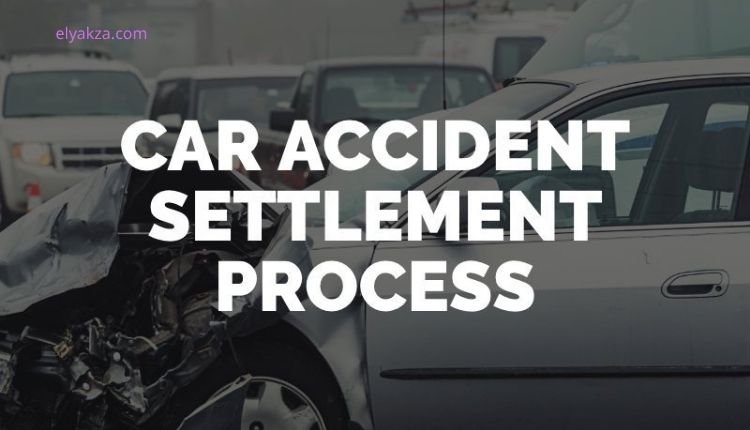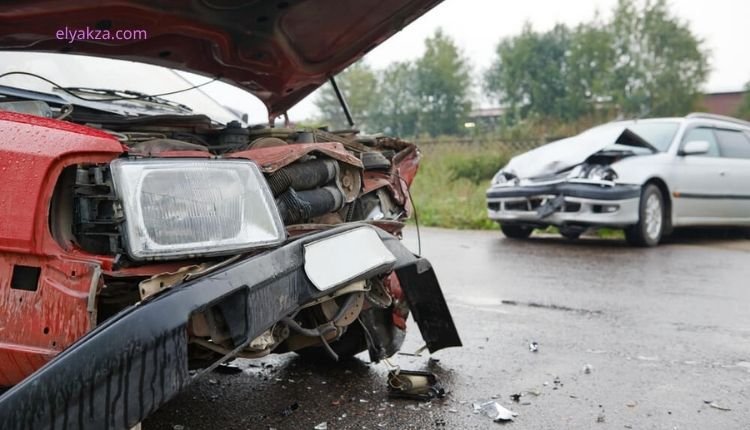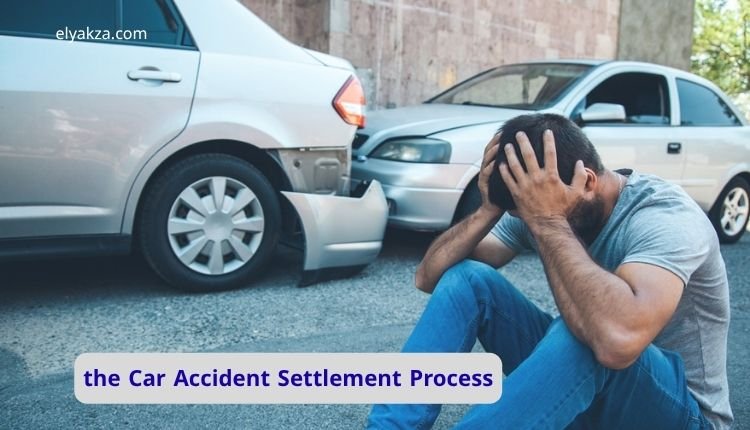Being involved in a car accident can be a traumatic and disorienting experience. Beyond the immediate shock and potential injuries, victims often face a confusing maze of insurance claims, medical bills, and legal jargon. Understanding the car accident settlement process is crucial for ensuring you receive fair compensation for your damages and injuries. This comprehensive guide will walk you through every step, from the immediate aftermath of an accident to hopefully receiving your settlement money, empowering you with the knowledge needed to navigate this complex journey.
قائمة المحتويات
Understanding the Initial Steps: Setting Up Your Car Accident Claim
The journey to a car accident settlement typically begins with setting up a claim. In most cases, settlements are paid by the at-fault driver’s insurance company. For them to even consider payment, a claim must be officially established. Each claim is assigned a unique claim number, which acts as its identifier throughout the process.
There are generally two primary ways a claim gets set up with the at-fault driver’s insurance company:
- The At-Fault Driver Reports the Claim: Often, if the accident involves significant vehicle damage or clear fault, the other driver will report the incident to their insurance company promptly. This is frequently driven by their desire to get their own vehicle repaired or a concern about potential legal action against them.
- You or Your Lawyer Report the Claim: If the other driver fails to report it, or if you prefer to take the initiative, you or your legal representative can contact the at-fault driver’s insurance company directly to set up the claim. This is a common practice, especially when seeking compensation for injuries or damages.
Regardless of who initiates contact, the car insurance company will require some fundamental information to open a claim. This typically includes:
- The Date of the Accident: Essential for establishing a timeline.
- Their Insured’s Policy Number: This allows them to quickly locate the responsible policy.
- A Short Description of How the Accident Happened: A brief overview helps them understand the incident and assign it to the correct department.
During this initial call, they will also inquire about whether your car was damaged and if you sustained any injuries. This information is vital for the insurance company to assign the case to the appropriate level of insurance adjuster. Cases involving more significant injuries, such as broken bones or those requiring surgery, are usually handled by more experienced adjusters because these claims tend to involve larger settlement amounts. It’s important to remember that merely having a claim number does not guarantee payment; it simply means the process has begun.
“Read Also: Car Accident Lawyer“
Verifying Coverage: The Foundation of Any Car Accident Settlement

One of the most critical, yet often overlooked, early steps in the car accident settlement process is the verification of insurance coverage. Many individuals mistakenly assume that because the other driver provided an insurance card at the scene of the accident, or because a claim number has been issued, that coverage is automatically confirmed. This assumption is 100% incorrect and can lead to significant disappointment.
For an insurance company to pay out on a claim, several conditions must be met regarding coverage:
- Active Policy at the Time of the Accident: The most fundamental requirement is that the at-fault driver’s insurance policy must have been active and in good standing on the exact date and time of the accident. This means the policyholder must have paid their premiums and the policy must not have lapsed.
- No Policy Exclusions: Insurance policies often contain specific “exclusions,” which are circumstances or types of damages that are not covered. An exclusion is simply a fancy word for coverage that is not included. Common examples of exclusions that can lead to a denial of coverage include:
- The driver of the vehicle was not listed on the insurance policy and was not an authorized user (e.g., an unlisted household member or friend).
- The vehicle involved in the accident was not listed on the policy.
- The vehicle was being used for commercial purposes without appropriate commercial coverage.
- The driver was under the influence of alcohol or drugs, and the policy has a specific exclusion for such incidents.
If the insurance company determines there is no active coverage or an applicable exclusion, your claim will likely be denied, regardless of fault or injury severity. This step is a prerequisite for any further progress in the car accident settlement process.
“Read Also: Navigating Commercial Truck Accident Claims“
The Role of Insurance Adjusters: Navigating Property Damage and Bodily Injury
Once coverage is cleared (meaning the policy is active and no exclusions apply), the at-fault driver’s insurance company will typically assign two different types of adjusters to your claim, especially if you’ve been injured:
- Property Damage Liability Adjuster: This adjuster’s primary responsibility is to handle the payment for damages to your vehicle and any other personal property damaged in the accident (e.g., a broken cell phone, watch, or other belongings). They will assess the damage, determine the cost of repairs or the total loss value of your vehicle, and arrange for payment. Their focus is solely on the physical property.
- Bodily Injury Liability Adjuster (BI Adjuster): Often referred to simply as the “BI adjuster,” this professional is responsible for handling your personal injury claim. Their scope includes evaluating and negotiating payment for your medical bills, lost wages due to inability to work, and compensation for your pain and suffering. This adjuster’s role is often more complex and involves a deeper investigation into your injuries and their impact on your life.
These adjusters operate independently, meaning you might communicate with them separately regarding different aspects of your claim. While the property damage claim might be settled relatively quickly, the bodily injury claim typically takes longer due to the nature of medical treatment and recovery.
Establishing Fault and Investigating the Accident

A crucial phase in the car accident settlement process is determining fault, also known as liability. Even with confirmed coverage, the insurance company will not pay unless their insured is found to be at least partially responsible for the accident. The insurance adjuster will undertake an investigation to establish fault.
Their investigative methods typically include:
- Reviewing the Traffic Crash Report: The official police report provides an initial assessment of the accident, often including diagrams, witness statements, and preliminary fault determinations.
- Interviewing Parties Involved: Adjusters will try to speak with various individuals connected to the accident, including the at-fault driver, you (the claimant), and any witnesses.
It’s vital to note that while adjusters may request a recorded statement from you, you are generally not required to provide one. As you don’t have a direct contract with the at-fault driver’s insurance company, you are not obligated to assist their investigation in this manner. A common tactic adjusters use is to claim they cannot process your property damage claim without a recorded statement; this is often untrue. Providing a recorded statement without legal counsel can inadvertently harm your personal injury claim, as anything you say can be used against you. Many successful personal injury claims, even those valued at hundreds of thousands of dollars, have been settled without the claimant ever giving a recorded statement.
After gathering information, the insurance adjuster will assign a percentage of fault to each driver or party involved in the accident. This percentage can range from 0% to 100%. In some states, if you are found to be more than 50% at fault, you may be barred from recovering damages, or your compensation may be reduced proportionally to your percentage of fault.
“Read Also: Commercial Truck Accident Attorney“
Gathering Medical Records and Understanding Settlement Reserves
Once fault is established, the focus shifts to your damages, particularly your injuries. The insurance company will need to review all your medical bills and records related to the accident. They will likely ask you to sign a medical authorization form, which would grant them direct access to your medical history. However, you are generally not required to sign this broad authorization. It’s often advisable to have your lawyer gather and submit specific, relevant medical records, rather than giving the insurance company free rein to access your entire medical history.
Simultaneously, the insurance company will set a “reserve” for your personal injury claim. By law, they are required to set aside a certain amount of money to pay for your potential settlement. This reserve amount can vary wildly, from zero dollars (if they initially believe there’s no liability or injury) to a substantial sum. As the insurance adjuster receives more information about your injuries, medical treatment, and prognosis, they can either increase or decrease this settlement reserve.
Your goal, and the goal of your legal representative, is to provide compelling evidence that prompts the insurance company to increase their settlement reserve as quickly as possible. This involves:
- Promptly Sending Medical Records and Bills: Providing all relevant medical documentation (doctor’s notes, diagnostic reports, treatment plans, itemized bills) is crucial. Delays in submitting these documents often lead to delays in your settlement.
- Documenting Lost Wages: If your injuries have prevented you from working, gather documentation of your lost income (pay stubs, employer statements).
- Tracking Pain and Suffering: While harder to quantify, documenting the impact of your injuries on your daily life, hobbies, and emotional well-being is important.
It’s important to understand that increasing the settlement reserve takes time. Insurance companies don’t typically raise reserves overnight; it’s a process driven by the submission and review of evidence.
“Read Also: Truck Accident Settlements“
Calculating Your Car Accident Settlement Value
A critical aspect of the car accident settlement process is determining the actual value of your personal injury case. While the insurance adjuster has an internal settlement range they can work within (which they will never disclose to you), you or your lawyer must calculate your own independent valuation of your case.
This valuation typically includes three main components:
- Out-of-Pocket Medical Bills: This includes all expenses related to your medical treatment, such as doctor’s visits, hospital stays, surgeries, physical therapy, medications, and medical devices. Even if your health insurance has paid some of these, you are still entitled to recover the full amount of the bills, as you may have to reimburse your health insurer.
- Lost Wages: This accounts for any income you’ve lost due to being unable to work because of your injuries. It can include past lost wages and, in severe cases, future lost earning capacity.
- Pain and Suffering: This is the most subjective and often largest component of a personal injury settlement. It compensates you for the physical pain, emotional distress, mental anguish, loss of enjoyment of life, and inconvenience caused by your injuries. There’s no single formula for calculating pain and suffering, but it’s often estimated based on the severity of injuries, the duration of recovery, and the impact on your daily life.
To accurately calculate your case value, especially the pain and suffering component, it’s often beneficial to consult with a personal injury attorney. They have experience with similar cases and understand how to quantify these non-economic damages effectively.
Strategies for Maximizing Your Car Accident Settlement
Navigating the car accident settlement process effectively requires strategic action. Here are key strategies to maximize your potential compensation:
- Seek Medical Attention Immediately: Even if you feel fine initially, always get checked by a doctor. Some injuries have delayed symptoms, and prompt medical documentation is crucial for linking your injuries to the accident.
- Follow All Medical Advice: Adhere strictly to your doctor’s recommendations for treatment, physical therapy, and follow-up appointments. Gaps in treatment or non-compliance can be used by the insurance company to argue your injuries aren’t severe or weren’t caused by the accident.
- Document Everything: Keep meticulous records of all medical appointments, bills, prescriptions, travel expenses to appointments, and any other out-of-pocket costs. Also, keep a pain journal to document your daily pain levels and how your injuries affect your life.
- Be Careful What You Say: Avoid discussing the accident or your injuries with anyone other than your doctor and your attorney. Do not give a recorded statement to the at-fault driver’s insurance company without legal counsel. Be mindful of social media postings, as they can be used against you.
- Do Not Settle Prematurely: Do not accept any settlement offer until you have completed all necessary medical treatment and understand the full extent of your injuries and future medical needs. Early offers are almost always lowball.
- Consider legal Representation: A skilled personal injury attorney can be invaluable. They can handle all communications with insurance companies, gather necessary evidence, negotiate on your behalf, and provide an accurate valuation of your case. They understand the tactics insurance companies use and can protect your rights, often leading to a significantly higher settlement than you might achieve on your own.
the Car Accident Settlement Process: the Conclusion
The car accident settlement process is undoubtedly complex, requiring patience, diligence, and a thorough understanding of your rights. From the initial claim setup and coverage verification to the detailed investigation of fault, the role of various adjusters, and the crucial calculation of your damages, each step demands careful attention. While it may seem daunting, equipping yourself with knowledge and, if necessary, professional legal guidance, can significantly impact the outcome of your claim. Remember, you have a right to fair compensation for the damages and hardships you’ve endured, and understanding this process is your first step towards achieving it.
John George is a professional writer focused on legal advice and attorney guides, offering practical and easy-to-understand content that helps readers navigate complex legal topics. His work covers various areas such as contracts, business law, family law, and consumer rights, always aiming to simplify legal concepts for everyday readers.
Through his articles, John provides step-by-step guides, insightful tips, and detailed explanations that empower readers to make informed decisions when dealing with legal matters. He bridges the gap between legal professionals and individuals seeking clarity in their legal journey.
John is committed to promoting accessible legal knowledge and believes that everyone deserves reliable information to protect their rights. His writing style combines professionalism with clarity, making his work a valuable resource for both individuals and small businesses.

